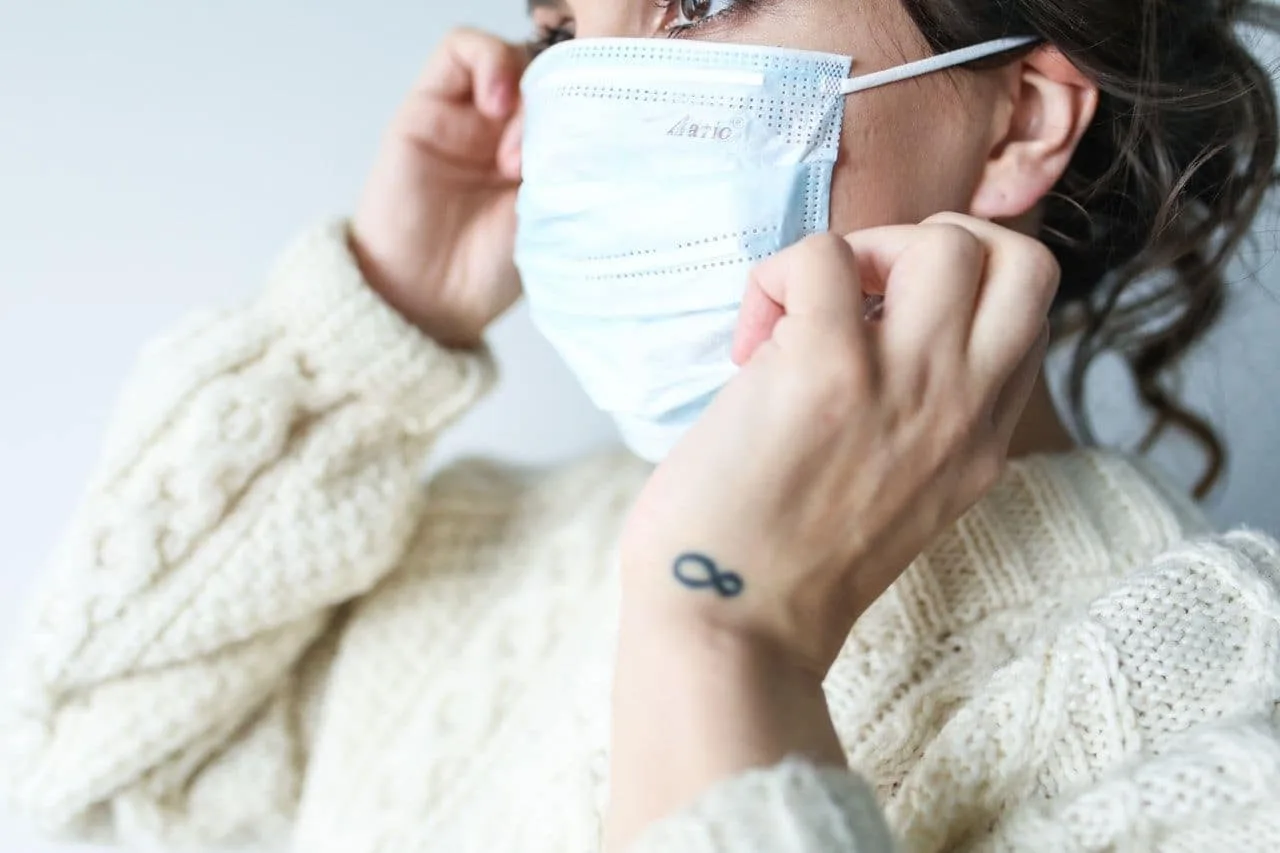
After speaking to other practitioners and researching online those remedies being used on the frontlines to treat Coronavirus, I have compiled a list of herbs, vitamins and homeopathic‘s that can be used to improve immune function and according to both Asian research and homeopaths on the frontlines seem to be effective for those people in countries experiencing this pandemic.
In regard to vitamin supplementation, the following list is what I have compiled so far that seems to have the most probability of strengthening your immune system to ward off these types of viruses.
Medicinal studies have demonstrated certain key nutritional supplements to help provide a boost to your innate ability to defend against flu-type viruses.
Vitamin A: If you are not currently feeling ill and do not believe you have had much exposure to a coronavirus it is suggested that you take between 10,000 and 20,000 international units of vitamin A, not beta-carotene. It is very important to mention here that vitamin A at higher levels can be teratogenic and should not be consumed at levels higher than 10,000 international units by pregnant women, those trying to conceive or those who think they might possibly be pregnant. Typically, dosages up to 100,000 international units are used short term for viral infections. This should not be done for extended periods. For people experiencing flulike symptoms it is typically suggested that you start with approximately 80,000 to 100,000 international units as a loading dose for approximately three days, then reduce by 10,000 international units per day over approximately one week and then stay on 10,000 to 20,000 international units until feeling well.
Vitamin D: Vitamin D is best taken with other fat soluble vitamins such as vitamin K and vitamin A. If you have not been on vitamin D in the recent past, but are currently feeling well, it is suggested that you start with 10,000 units per day for the first three days and then reduce to 5000 units per day until you feel that your immune system is not under siege. If you are feeling ill especially with flu like symptoms it is suggested that you start with 20,000 units for three days, reduced to 10,000 units for three days and then on the maintenance those to 5000 units until feeling well.
Vitamin K: This should be taken with vitamin D and vitamin A if possible. It is suggested to take vitamin K in the MK4 or MK7 form at the rate of approximately 500 to 800 mcg per day. Although there is controversy over vitamin K’s potential to effect clotting time it is suggested that if you are on anticoagulants (blood thinners), you should discuss this with the physician that has prescribed those medications for you before starting on this regimen.
VITAMIN C: In this time of uncertainty, it is suggested that you take a divided dose of 3000 mg daily of buffered ascorbic acid or ester C, even if you are feeling well. If you feeling like you are “coming down with something”, you should do what is commonly referred to as a vitamin C flush. You take a measured dose of approximately 500 mg of a buffered ascorbic acid or ester C, preferably in a capsule or loose powder every hour until you get either a significant increase in bowel gas and or loose stool. This is called bowel tolerance. Then lower the dosage that caused the “flush“ by about 25% spread out through the day. This dose should no longer cause loose bowels, but if it does continue to reduce it by approximately 500 to 1000 mg until you do not have bowel flushing. Remember to spread this dosage out throughout the whole day. For example; if you took 500 mg every hour and around the 12 hour mark you began to have a loose stool or excessive bowel gas you would then take approximately 75% of that amount. In this scenario you would have taken 6000 mg of vitamin C to cause the “flush“ and then your daily dosage should be approximately 4000 mg per day in divided doses.
A few other nutrients to take:
MAGNESIUM: It is suggested that you take approximately 400 mg/day in divided doses with or without symptoms. Preferably, not the oxide form.
ZINC: Preferably taken as a lozenge take approximately 60 mg/day in divided doses as it has been reported that zinc taken this way may be able to inactivate viruses on contact.
SELENIUM: 200 mcg/day in divided doses.
Homeopaths around the world who have been treating people with the active novel coronavirus believe they have found what they call the Homeopathic genus epidemicus remedy. This is a homeopathic remedy that has been found to help the most people. These homeopaths are using this particular remedy as both a preventative and treatment for active symptoms. The remedy is called Gelsemium and the potency is 30C. It has already become very difficult to obtain this remedy.
If there are Novel Virus cases in your community, or expected to come, homeopaths around the world are suggesting that you take a daily dose of the genus epidemicus “Gelsemium” in the 30c potency. If it is a liquid remedy it is suggested that you take a half a pipette or dropper full or so once per day. If it is in the pellet form, it is suggested that you take six small pellets per day. Whether it is a liquid or a pellet, it is suggested that you take the remedy without any other food or liquid and hours away from either brushing your teeth or drinking coffee. The remedy should be held under the tongue for at least one minute if possible.
According to these same homeopaths, if a person feels as though they are “coming down with something”, it is suggested that they take a dose of the genus epidemicus in the 30c potency every hour and reduce the frequency as symptoms improve.
For more specific help as each person may express somewhat different symptoms it is suggested that you contact a homeopathic physician in your area who may want to ensure that your symptoms perfectly fit the genus epidemicus remedy and possibly change the potency or add in another helper remedy.
Word of Caution. If you or a family member develops concerning symptoms, please seek medical attention immediately. The whole world’s medical community is rushing to develop life-saving treatments. Medicine also has potentially life-saving antibiotics for pneumonia and breathing intubations to help people in dire respiratory distress.
To this point; Today, Ebola Virus treatments are 90% successful with early detection. The drug, Remdesivir (for Ebola) and the drug, Chloroquine (for malaria), were both effective in stopping Coronavirus from replicating in a petri dish. These drugs may become available to your community if found to be effective in people and these drugs are not considered terribly toxic.
Traditional Chinese Medicine Remedy (TCM):
The Shanghai Institute of Materia Medica and the Wuhan Institute of Virology had discovered that the TCM remedy called Shuanghuanglian could be used to "inhibit" the novel Coronavirus or 2019-nCoV.
This remedy is made from a blend of honeysuckle, Chinese skullcap and forsythia.
Remember, any new nutritional protocols should be discussed with you are primary care physician.
None of the foregoing statements have been evaluated by the Food and Drug Administration. None of the above mentioned nutrients, herbs or homeopathic‘s are intended to diagnose, treat, cure, or prevent any disease.
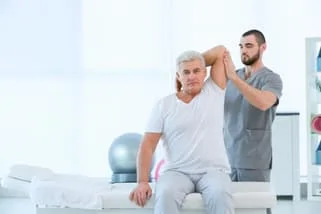
What is kinesiology, often called Applied Kinesiology or AK? It is a technique developed by a mentor of mine, Dr. George Goodheart and it involves the use of manual muscle testing. Manual muscle testing has become the signature of applied kinesiology, and is used to evaluate the functional status of the nervous system. Since the nervous system controls all major body functions, it is imperative that a doctor be able to evaluate its function. Applied kinesiology gives deep insight into the nervous system, allowing a window into the function of the system that controls organs, glands, and most other tissues.
Manual muscle testing is a great tool to help understand a patient's individual dysfunctions from nutritional needs and food and environmental allergens, to specific nervous system and acupuncture circuit abnormalities and all the collateral dysfunctions these issues are causing. Used properly, applied kinesiology becomes a roadmap for understanding and correcting underlying causes.
Applied Kinesiology or AK can be used diagnostically to see if a persons knee or hip pain is being triggered by anything from gait related abnormalities that are corrected by acupuncture point stimulation in the feet to muscles that have been “shut off” and need to be “turned on”. This “turning on” can be accomplished by numerous forms of treatment, including, but not limited to, the stimulation of acupuncture points, other reflex points called neurolymphatics, neurovascular points, direct treatment to muscle and tendon receptors, spinal manipulation or specific nutrients. Each of these forms of treatment can be determined through the use of the manual muscle testing that is integral to applied kinesiology.
Knee pain: Knee pain can be caused by many different problems. Some of these problems might sound familiar to you, such as; ligaments and cartilage issues to tendon and muscle problems. Sometimes, there is no specific problem that can be determined by x-ray, traditional orthopedic testing or even an MRI and this is where kinesiology shines. It is possible that one of the acupuncture circuits running through the knee is disturbed causing pain, it is possible that there is a specific muscle dysfunction that is causing abnormal movement in the knee that then creates pain. That dysfunction may be caused by a relationship to an organ or gland through the acupuncture circuits, nutritional deficiencies, muscle spindle receptors or golgi tendon organs which set the tone of the muscle or more remote issues relating to other areas of the body and brain. Through the use of kinesiology, the specific cause or causes of the dysfunction can be determined and treated.
Digestive Problems: Digestive issues are not uncommon, but often figuring out the cause can be quite elusive. The use of AK can make that search less daunting. Using manual muscle testing can aid in the determination of food intolerances that might be disturbing intestinal or stomach function, the possibility of dysbiosis which is basically described as an over abundance of bad microbes such as bacteria, fungi (Candida) or parasites in relationship to the good bacteria that is supposed to inhabit your digestive tract. It is this balance between good bacteria and bad microbes that either create a healthy or unhealthy microbiome or microbiata. The use of AK can also help determine whether the organs of digestion appear to be working properly. These would include everything from the stomach, intestines, gallbladder, pancreas and the connections between all of these parts that must work in harmony to allow for proper digestion.
If there are specific vitamins, supplements or herbs that might be helpful, AK can be instrumental in determining the specific compounds that are needed.
All of the aforementioned concepts in regard to kinesiology can be applied to other structural issues such as neck pain, sciatica, hip pain and other skeletal issues or other types of conditions such as; headaches, seasonal allergies or vertigo.
Kinesiology is a wonderful tool to help both the practitioner and the patient understand their symptoms in a much more comprehensive way, leading to an in-depth, understandable and streamlined treatment protocol.
For a more in-depth description of applied kinesiology click here to read the book chapter written by Dr. Rubenstein on applied kinesiology for a publisher.

In case you are not familiar with applied kinesiology, it was a diagnostic and treatment system developed by one of my greatest mentors, Dr. George Goodheart, beginning in 1964. Applied kinesiology or AK, sometimes called kinesiology, utilizes manual muscle testing as a window into the body and mind. Each muscle in the body has been found to relate to a different acupuncture circuit, because of this, it has become a great tool to understand the way the body functions and the best ways to treat it.
In regard to seasonal allergies, AK can be used to help determine the particular offenders to the immune system. As you know, some people are sensitive to tree pollen or grass pollen, while others may be mostly sensitive to mold or other environmental irritants. Although, the immune system should not be overly reactive to any of these naturally occurring particles, somehow a sensitivity has been developed. Whether it is stinging or watery eyes, sneezing, sinus congestion, runny nose, breathing difficulties etc., seasonal allergies can make you miserable. Different practitioners utilizing kinesiology, will treat the patient differently once the particular offenders are found, but in general, there are usually particular nutrients or other types of supplements that are found to “negate“ the weakness these offenders cause and the patient will be instructed to take one or more supplements. Many practitioners will also “treat“ the patient in relation to the offenders. This can be done in many different ways, from the use of acupressure points or acupuncture to other hands on treatments that typically impact the acupuncture system.
At times, some patients may need a much more in-depth treatment protocol that involves clearing any “dysbiosis.“ Dysbiosis in simple terms, relates to the digestive system having an imbalanced flora, sometimes called the microbiota or microbiome. Often times, people will have an overgrowth of bad bacteria, parasites, fungi etc., that is disturbing the homeostasis of the gut. When this is the case, myriad problems can occur in the body, but allergies may often be one of the results. In these patients a protocol specific to the individual must be developed by the practitioner and the protocol is made much more precise by the use of applied kinesiology. AK can help find the exact nutrients, herbs, supplements that you need to clear the dysbiosis and take a significant burden off of your body. At that point, it is much easier to work to clear the seasonal allergies.
Reverend Bruce Nathan sums it up well…
“I have been plagued with allergies for twenty years until you started treating me. Before your treatments I managed my allergies with mostly over the counter antihistamines and sometimes prescription drugs such as Hismanal, Seldane, and Claritin. While these would help if I took them daily, at times no amount could control the sneezing and watery eyes.”
“For two years you treated my allergies. After the first month they were under control using the supplements you supplied. Last year I didn’t require any supplements or treatments. Thus far this year I have been symptom free as well.”
“I wholeheartedly recommend you to any people I know who are suffering from allergies. Some have been receiving allergy shots for years and others try the prescription drugs. While some are slow to try something different, I am certain they would experience the same type of results that I did and would be better off than they are currently.”
Reverend Bruce A. Nathan, Long Island, New York
Of course, every person is different. Some response amazingly fast, some need the more in-depth treatment to clear the dysbiosis to calm the immune system. This can take a minimum of three months or as much as a year. Some people will always need to take some supplements to support the work, while others won’t. If you’re sick and tired of seasonal allergies and want a natural approach, please call the office to discuss your particular case.
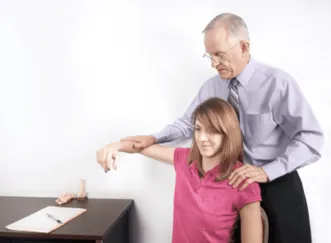
IN 1964, DR. GEORGE GOODHEART a teacher and mentor of mine for many years, made a discovery that was fundamental to the hands on healing arts. He discovered that postural distortion could be explained by a specific muscle weakness, and that both muscle weakness and its associated postural distortion could be corrected by hands-on technique.
Dr. Goodheart the son of a chiropractor, skilled in nutrition, homeopathy and other healing methods was also trained as a chiropractor, but as his father before him became proficient in many other procedures such as meridian therapy, osteopathic cranial technique, and clinical nutrition. Dietary and lifestyle considerations were also a major part of his approach. More important was his extensive knowledge of anatomy, physiology, and biochemistry which provided him a solid background for applying and integrating existing techniques.
In addition, Dr. Goodheart studied the findings of other researchers concentrating not only on the body's structure, but on its chemical and mental components as well.
Along the way, he came across the findings of Dr. Chapman, an osteopath. who bad observed that various reflex points on the body related to specific organs and glands. Dr. Goodheart took Dr. Chapman's observations a step further, and upon experimentation, found out that these "neurolymphatic" reflexes correlated with specific hypotonic muscles (muscles that test weak upon manual muscle testing).
The technique of testing muscles to aid in the diagnosis aod treatment of a patient became known as "Applied Kinesiology". Over the past fifty plus years, the field of applied kinesiology has grown tremendously, and is able to offer an integrated analysis of each patient, incorporating various practices of alternative healing arts, such as: • The meridian system of Chinese medicine. • Asian and Indian herbs, as well as other herbs from all over the world. • Classical and complex homeopathy • Nutritional supplementation. • Chiropractic spinal and extremity work. • Cranial sacral techniques of osteopathy • Reflexology. • Traditional medicine, including diagnostic procedures such as blood and urine analysis, blood pressure evaluation, as well as orthopedic and neurological testing.
The use of manual muscle testing has become the signature of applied kinesiology, and is used to evaluate the functional status of the nervous system. Since the nervous system controls all major body functions, it is imperative that a doctor be able to evaluate its function. A general evaluation of the peripheral nervous system (that controls muscles and allows us to sense our environment via hot, cold, and touch receptors) and of the central nervous system (that allows us to sense our environment via sight, sound, smell. and taste), has been performed by doctors for quite some time. Applied kinesiology gives further insight into the nervous system, allowing an evaluation of the function of the nervous system that controls organs, glands, and other tissues.
Manual muscle testing is a great tool to help determine a patient's nutritional needs, as well as substances that he or she may be having issues with, including food and environmental allergens, chemicals, and heavy metals. It can also help assess whether the body has a problem with pathogenic bacteria, yeast, parasites or other microbes.
As in all holistic approaches, the applied kinesiologist treats the whole patient in order to help him or her achieve optimal functioning of all body systems. The holistic physician looks beyond symptoms in order to understand the reasons why a patient's system is dysfunctional, and to determine the basic underlying cause of the disease. Specifically, applied kinesiology includes three components within its paradigm: structural, chemical/nutritional. and emotional. This combination is quite unique, particularly because structural and emotional considerations are rarely integrated in other health approaches.
Structural: The structural portion of treatment involves the spinal and cranial sacral systems. Without proper structure, the body cannot function optimally. This may lead to vitamin deficiencies, acupuncture disturbances, as well as gland and organ dysfunction. Migraines, bowel irregularity, and reproductive problems are among the long list of conditions that may be instigated by poor structure.
Chemical/Nutritional: In order for the human machine to function optimally, it needs optimal fuel at optimal rates. Balancing our in-take of nutrients, and ensuring that our digestive system assimilates and uses the nutrients efficiently are paramount to achieving health.
Emotional: Applied kinesiologists often use structural corrections, meridian therapy, as well as nutritional and homeopathic approaches to impact a patient's emotional state. Though emotional conditions are often ambiguous and difficult to pin down, the use of manual muscle testing can help pinpoint issues and their underlying causes, that can then be addressed by either traditional psychological means or through specific applied kinesiology techniques to impact the psyche. Also, physical treatments that eliminate imbalances in the body are sometimes very effective in helping a patient overcome negative emotions.
The conditions for which people seek an applied kinesiologist vary greatly. Injured athletes, people suffering from chronic fatigue syndrome, chronic pain, temporo-mandillular joint (jaw) problems, concussions, intestinal issues, hip, back and neck issues and hormonal disorders are primary examples of those who tum to applied kinesiology for treatment.
Keep your muscles an arms length away from untrained professionals. If you choose to consult an applied kinesiologist, keep your eyes open. Many muscle testing systems have been developed over the years, some of which are inconsistent with the approach advocated by the international College of Applied Kinesiology. Many lay persons and professionals alike are performing muscle testing without proper training. Some fail to coordinate the muscle testing findings with other standard diagnostic procedures. This may lead to improper diagnosis and treatment, and may have dire consequences should you be suffering from a serious condition.
Make sure to check if the person you are consulting is a licensed health care professional, and has been trained in courses offered by the International College of Applied Kinesiology. To find an accomplished applied kinesiologist in the United States or abroad, check the website of the International College of Applied Kinesiology; www.icakusa.com. Although I am a licensed chiropractor, I expanded my practice “tool box” by specializing in applied kinesiology and becoming a diplomate of the American Clinical Board of Nutrition, a Certified Clinical Nutritionist and a Fellow and Diplomate of the International Academy of Clinical Acupuncture, as well as utilizing functional neurology.
For a more in-depth description of applied kinesiology click here to read the book chapter written by Dr. Rubenstein on applied kinesiology for a publisher.
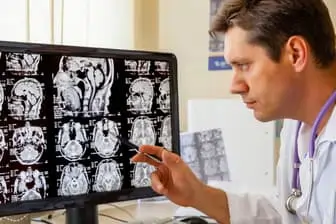
There are different levels of traumatic brain injury’s. Concussions are the most common type and are often referred to as mTBI or mild traumatic brain injury.
mTBI's have a primary and secondary component. The immediate damage to the brain that is sustained from the trauma is called the primary component. In this component, there is some bruising of the brain and some possible bleeding, shearing and tearing of nerves, other brain cells and blood vessels. It is here that a significant amount of brain cell death begins within hours of the head trauma. The secondary component of the mTBI starts within minutes of the trauma and may possibly continue for years. In the secondary component, there is aberrant brain cell functioning, a severe energy crisis as well as damaging chemical reactions occurring. This is where creatine and other nutritional approaches create healing.
The damage to the actual nerve cells, particularly the membrane of the cells causes the mineral ions of calcium, sodium and potassium to become imbalanced inside and outside the cells leading to swelling of the cells thus causing brain dysfunction and even nerve cell death.
Since 40% of the energy the brain consumes is to maintain mineral ion balance, a major energy crisis begins as the brain struggles to regain mineral balance. The brain also starts having trouble using glucose or blood sugar as a source of fuel, creating even more of an energy crisis. This was discussed in an interesting journal article from 2000; Bergsneider M, Hovda DA, Lee SM, et al. Dissociation of cerebral glucose metabolism and level of consciousness during the period of metabolic depression following human traumatic brain injury. J Neurotrauma. 2000;17:389-401 [PubMed]
Not only is there the building energy crisis, there are four other major problems mounting in the brain. Excitotoxicity, Oxidative Stress, Mitochondrial Dysfunction and Inflammation are all adding to brain dysfunction and even brain cell death. These processes create even more of an energy crisis particularly due to their destructive effects on the cell membranes and mitochondria (the energy organelle in every cell).
Creatine is a compound made up of three amino acids. It is typically found in large amounts in muscle tissue and this is why it is used by body builders to increase muscle mass. Creatine is not only found in muscle tissue, but high amounts are also found in the brain and is intricately involved in energy production. If you remember from biology class, the energy molecule that has always been spoken about is called ATP, adenosine triphosphate. In the central nervous system, creatine works by donating a phosphoryl group to make ATP thereby helping to replenish stored energy. A recent journal article describes the process in more detail. Béard E, Braissant O. Synthesis and transport of creatine in the CNS: importance for cerebral functions. J. Neurochem. 2010; 115: 297–313.
Using very specialized brain imaging called proton magnetic resonance spectroscopy to measure the levels of creatine pre- and postconcussion, it has been demonstrated that creatine levels in the brain decrease after sustaining a concussion.
There have been two human studies using creatine supplementation in children after sustaining a moderate to severe TBI. These types of TBI’s are much more severe than the mild or mTBI that a concussion is, but we can see in even these more damaging head injuries, creatine has a significantly positive impact. These studies, showed that compared with the control group (didn’t get creatine), the children who were supplemented with creatine had significantly improved cognition, communication, self-care, personality, and behavior and significantly decreased headaches, dizziness, and fatigue. Based on these studies, creatine shows great promise for the treatment of concussions.
I’ve been using creatine in concussion patients for quite some time now and have definitely found it to be helpful, sometimes even within days. Unlike a lot of other supplements that people should take after a concussion, creatine is incredibly inexpensive. The only issue some people have is they do not like the texture as it is a gritty powder that is typically just mixed into water, but does not dissolve easily. A small price to pay for the potential healing of creatine.
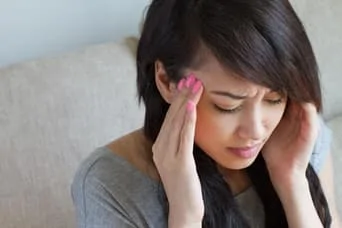
Why have my other symptoms been improving, but these headaches persist?
If you’ve had a concussion or two or three and are still plagued by headaches, read on.....
Once experiencing a concussion, it is common for people and doctors alike to assign every symptom someone has been experiencing to the injured brain after a concussion. Although, this can be true, there are many cases of headaches following concussion‘s that are not being caused by the brain injury.
It has been my experience, that often enough, some or all of a persons headaches they experience after their mild traumatic brain injury are actually due to muscular or myofascial trigger points in the neck muscles caused by the whiplash injury to the neck that occurred at the same time as the mTBI.
It is fairly easy to determine if this is the case. Typically, a well-trained clinician that is used to dealing with these types of cases can make this distinction. Even though some of the mental or physical exertion that can provoke concussion symptoms such as nausea, blurry vision, dizziness and headaches, can trigger myofascial headaches, by activating these myofascial trigger points. Therefore, specific treatment to disrupt and eliminate these trigger points will stop the recurrence of the headaches apart from any treatments geared specifically towards rehabilitating the brain injury.
I recently began treating a young man who sustained two concussion within months of each other. He was under the impression that his headaches were due to his mTBI, but upon examination, I found this not to be the case and treatment directed at eliminating the trigger points in his neck muscles has nearly eliminated his headaches in just eight visits over only a few weeks of treatment.
These headaches can be constant or episodic. They can be low level and annoying or intense and debilitating. These headaches can be in the temples, behind the eyes, in the forehead, top or back of the head or cover the entire head or only one side. There are basically four major muscles that can have trigger points in them that radiate into various parts of the head. Often all of these muscle are involved and can cause differing headache experiences depending on whether one set or all are active at the same time.
The most important thing is to be properly diagnosed and not assume all of your symptoms are brain related. Of course, if all of your symptoms are related to the brain injury, there are great function neurological and clinical nutritional protocols to aid in your recovery. Functional neurology, which will be a future topic on my blog can specifically target different neurological pathways to effect the nervous system to help balance dysfunctional regions. Clinical nutritional compounds that can help reverse the energy crisis, inflammatory processes, free radical or oxidative onslaught along with the other pathological effects of mTBI’s will also be discussed in future posts.
For now, remember one thing...If you have a concussion...TREAT IT!!!

Although, there has been a lot in the news about concussion, many people are still quite confused as to what it actually is and the differences between a concussion which is called a mild traumatic brain injury and more severe traumatic brain injuries.
Not too long ago, you were only considered to have sustained a concussion if you lost consciousness (were “knocked” out) from a head injury. Many people are still under this impression, but the facts say otherwise. Not only do you not have to lose consciousness, but research shows that only about 10% of people actually lose consciousness and believe it or not, you don’t even have to have a direct impact of your head.
To this point, many concussions in military personnel occur from the force of an explosion without any direct physical impact. Another source of many concussions is from whiplash injuries, such as in car accidents or in an infant that is violently shaken.
Concussions or mTBI’s (mild traumatic brain injuries) are the most common type of traumatic brain injury. To give you an idea as to the prevalence of traumatic brain injuries, the World Health Organization (WHO) estimates yearly that there are approximately 50-60 million head injuries worldwide. Concussions or mTBI’s are approximately 75-80% of all head injuries. There are a variety of physical, mental, emotional and cognitive, changes and symptoms, which, if subtle may not be recognized.
Unfortunately, according to recent data more than 50% of people diagnosed with a mild traumatic brain injury in the emergency room had any follow up care after leaving the hospital, even those with significant symptoms.
Another very important piece of information not widely know, is that people that have sustained one concussion are more prone to another, frequently, with even less trauma than what caused their previous mTBI. This is particularly true if the next brain injury occurs before the previous one has resolved. It is well documented in the scientific literature that multiple concussions increase the risk for conditions, such as: dementia, Parkinson’s disease, and depression and it is becoming clearer that multiple concussions are associated with chronic traumatic encephalopathy or CTE (currently CTE can only be diagnosed by autopsy).
CTE has been big news in football for the past few years, because of the controversy over the autopsy findings that led to the movie Concussion and the resulting shockwave regarding the NFL. CTE is serious brain damage and this understanding explains the huge mental and emotional symptoms many professional and even non-professional athletes have after years of head traumas in their sport.
Unknown to most, concussions have a primary and secondary component. The primary component is the immediate damage to the brain due to the trauma.
This primary component includes bruising of brain tissue, some mild bleeding, shearing and tearing of nerves and to other brain cells and blood vessels in the brain. Significant nerve cell death begins within hours of the brain injury.
Next comes the secondary component. This component starts within minutes of the trauma, but can go on and on for years or for the rest of someone’s life. This secondary component consists of chemical reactions such as inflammation and oxidation as well as abnormal brain cell functioning and even apoptosis (cell death).
It is here, in the secondary component, that the nutritional approach works. Although the majority of research supporting a nutritional approach to treating concussions has been done on animals, the potential for specific nutrients to aid in the treatment and even the prevention of concussions is mounting.